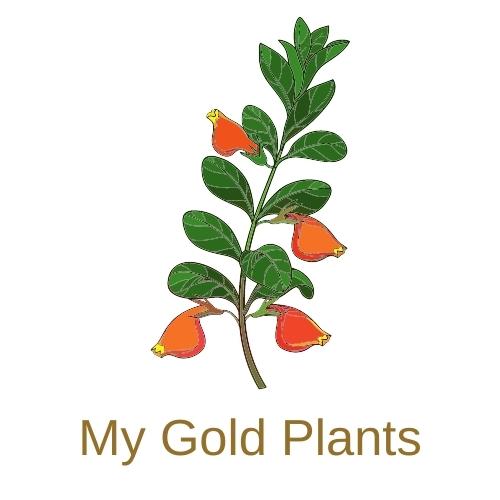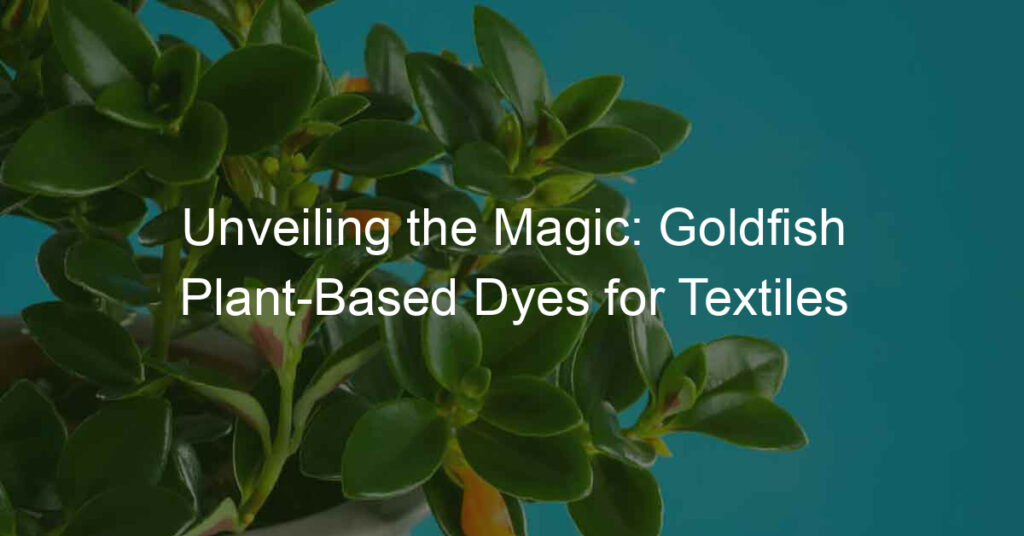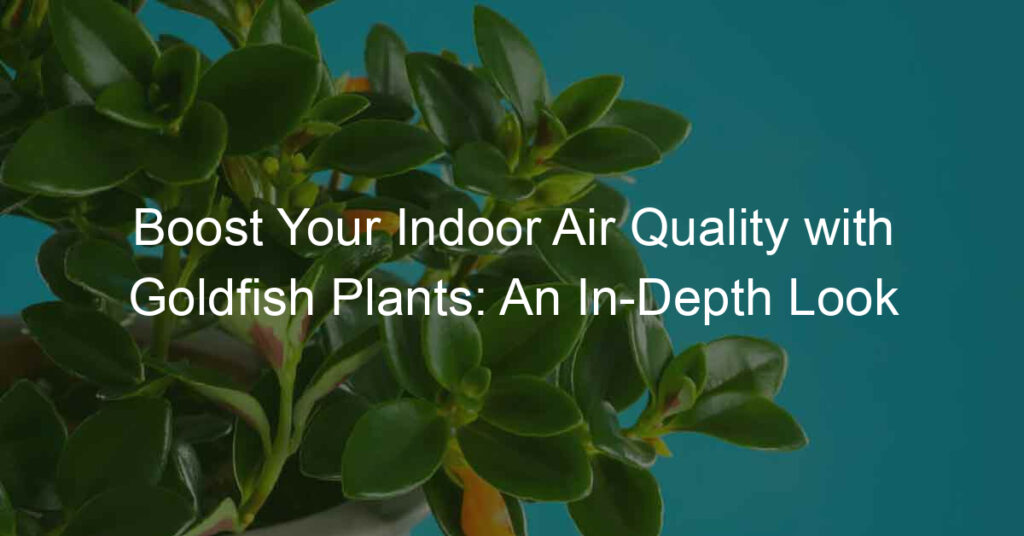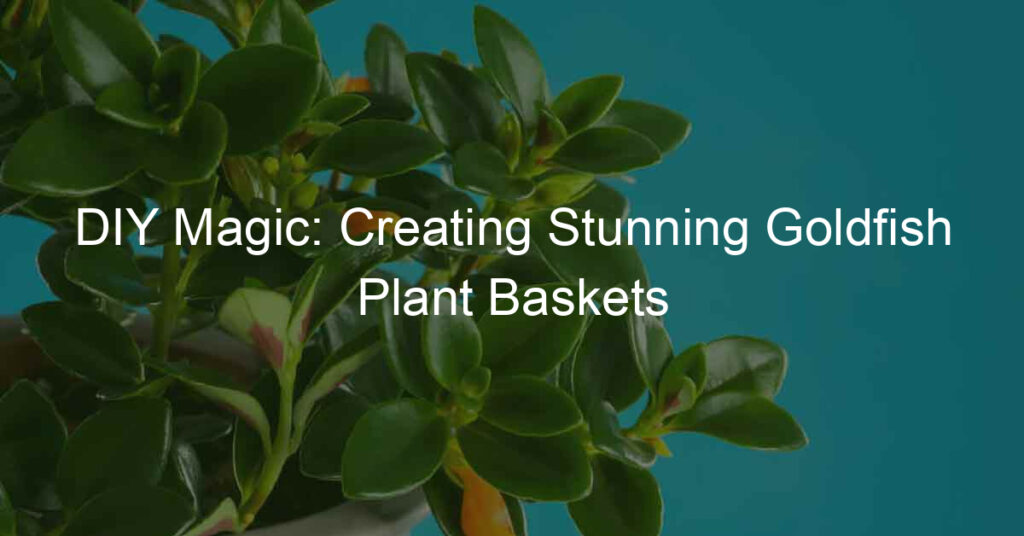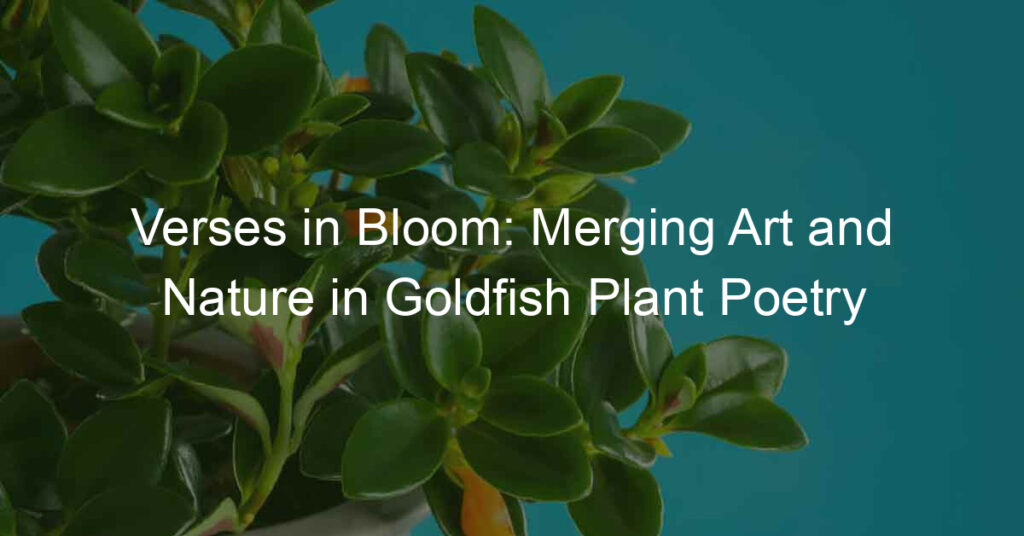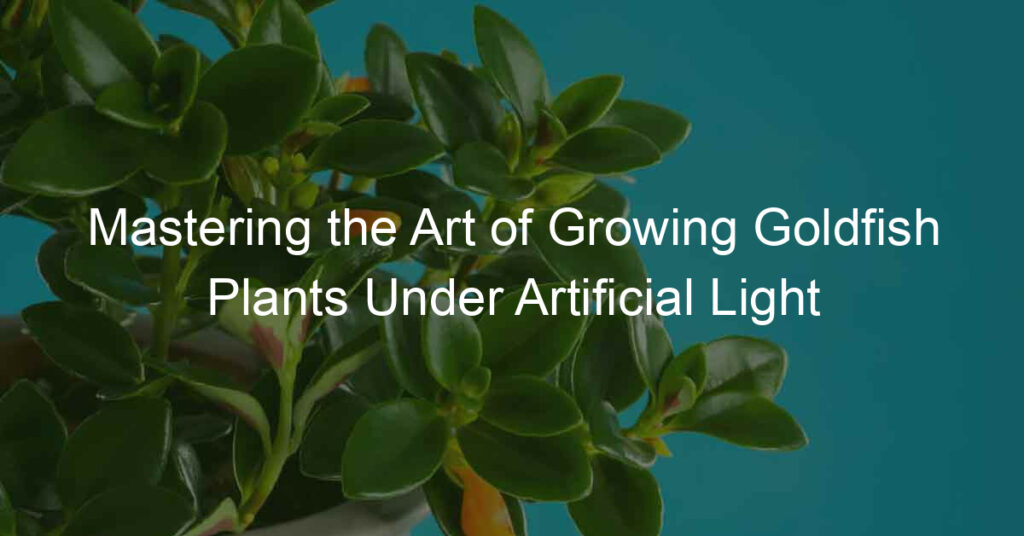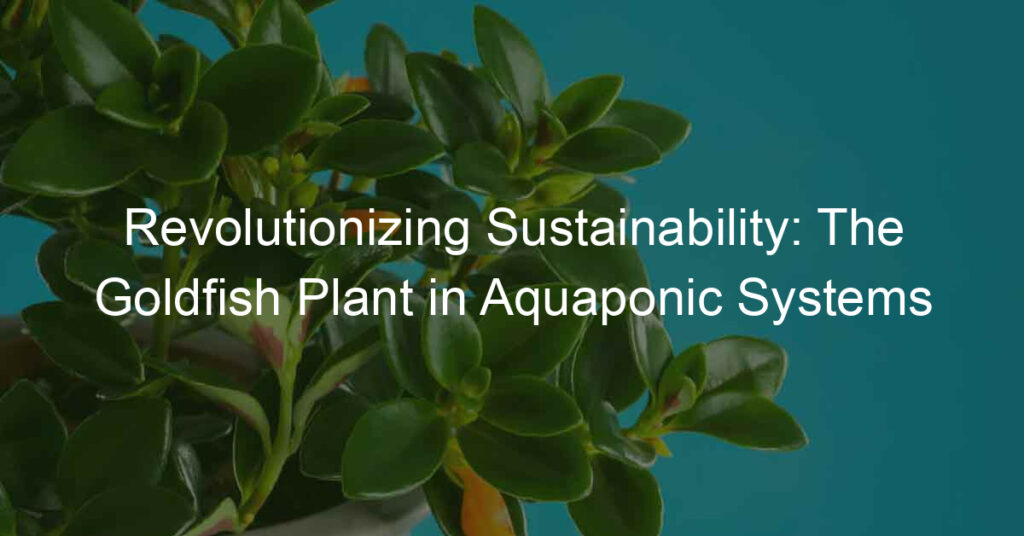Natural dyes, like those derived from the goldfish plant, offer several benefits over synthetic dyes. First, they are environmentally friendly. Synthetic dyes often contain harmful chemicals and require a lot of water to produce. On the other hand, natural dyes are biodegradable and require less water. Second, natural dyes are safer for the skin. Synthetic dyes can cause allergic reactions in some people, while natural dyes are generally hypoallergenic. Lastly, natural dyes produce unique, vibrant colors that cannot be replicated by synthetic dyes.
Plant-based dyes play a crucial role in sustainable textile production. They offer a green alternative to synthetic dyes, reducing the industry’s environmental impact. Furthermore, they can help create unique, artisanal products. The use of plant-based dyes, like those from the goldfish plant, is a growing trend in the fashion industry, with more and more brands embracing this sustainable practice.
Understanding the Goldfish Plant for Coloring
When it comes to natural coloring, the Goldfish Plant stands out as an exceptional source. Let’s delve into understanding this unique plant and how it contributes to the world of textile coloring.
Goldfish Plant: A Natural Color for Textiles
The Goldfish Plant, scientifically known as Nematanthus wettsteinii, is a vibrant plant known for its rich, goldfish-like flowers. This plant is not just a visual treat but also a natural coloring agent for textiles. Let’s explore its characteristics and the process of extracting color from it.
-
- Characteristics of Goldfish Plant
The Goldfish Plant is a tropical evergreen that originates from Central and South America. It is characterized by its glossy, dark green leaves and bright orange, pouch-like flowers that resemble a goldfish. The plant is known for its hardiness and ability to bloom throughout the year. The vibrant orange color of the flowers is what is used as a natural dye in textiles.
-
- Color extraction process from Goldfish Plant
The process of extracting color from the Goldfish Plant is simple and eco-friendly. The flowers are harvested and then boiled in water. The water absorbs the vibrant orange color from the flowers. This colored water is then used to dye textiles. The intensity of the color can be controlled by adjusting the concentration of the flowers in the water and the duration of boiling.
Using the Goldfish Plant for coloring textiles is a sustainable and environmentally friendly alternative to synthetic dyes. It not only adds a unique, natural color to the textiles but also reduces the harmful impact of synthetic dyes on the environment.
Eco-friendly Textile Dyes: The Goldfish Plant Advantage
As we delve deeper into the world of eco-friendly textile dyes, the Goldfish Plant emerges as a game-changer. Not only does it offer a vibrant and natural color for textiles, but it also brings along an array of environmental benefits. Let’s explore these advantages and compare them with synthetic dyes.
- Environmental benefits of using Goldfish Plant dyes
The Goldfish Plant, scientifically known as Nematanthus, is a gift to the textile industry from Mother Nature. Using its dyes has several environmental benefits.
- Reduced Pollution: Unlike synthetic dyes, Goldfish Plant dyes do not release harmful chemicals into the environment during their production or use. This significantly reduces water, air, and soil pollution.
- Biodegradable: Goldfish Plant dyes are completely biodegradable. They break down naturally without leaving any toxic residues behind.
- Sustainable: The Goldfish Plant is a fast-growing plant, making it a sustainable source for dyes. It can be harvested without causing harm to the ecosystem.
- Comparison with synthetic dyes
When compared to synthetic dyes, Goldfish Plant dyes stand out for their eco-friendliness and sustainability. Here’s a quick comparison:
| Aspect | Goldfish Plant Dyes | Synthetic Dyes |
|---|---|---|
| Environmental Impact | Low | High |
| Biodegradability | Yes | No |
| Sustainability | High | Low |
In conclusion, the Goldfish Plant offers a green and sustainable alternative to synthetic dyes. It’s a step towards a cleaner and healthier environment, making it a clear winner in the textile industry.
Goldfish Plant Color Extraction
Extracting color from the Goldfish Plant is a fascinating process that combines science and art. This process allows us to create organic dyes that are not only beautiful but also sustainable and eco-friendly. Let’s delve into the process of extracting these vibrant colors.
Organic Dyes from Goldfish Plant: The Extraction Process
Extracting color from the Goldfish Plant involves a few simple steps. The process is straightforward and can be done at home with a few basic tools and materials. Here’s a step-by-step guide to help you through the process.
-
- Step-by-step guide to extract color from Goldfish Plant
First, you will need to gather a good amount of Goldfish Plant leaves. The more leaves you have, the more dye you can extract. Once you have your leaves, you will need to crush them to release the color. This can be done using a mortar and pestle, or by simply using your hands.
Next, you will need to boil the crushed leaves in water. The boiling process helps to extract the color from the leaves. After boiling for about an hour, you should notice the water changing color. This is your dye.
Finally, you will need to strain the liquid to remove any leftover plant material. The remaining liquid is your Goldfish Plant dye, ready to be used in your next art or craft project.
-
- Tools and materials needed
To extract color from the Goldfish Plant, you will need the following tools and materials:
| Tools | Materials |
|---|---|
| Mortar and pestle (or hands) | Goldfish Plant leaves |
| Pot for boiling | Water |
| Strainer | None |
Extracting color from the Goldfish Plant is a fun and rewarding process. Not only does it allow you to create your own organic dyes, but it also promotes sustainability and respect for nature. So why not give it a try?
Sustainable Textile Coloring with Goldfish Plant-Based Colorants
As we continue to explore sustainable alternatives in the textile industry, the use of Goldfish Plant-based colorants has emerged as a promising solution. These natural dyes, derived from the Goldfish Plant, offer a range of vibrant colors that are not only beautiful but also eco-friendly. Let’s delve into some successful case studies that highlight the potential of these plant-based dyes.
Case Studies: Successful Use of Goldfish Plant Dyes
-
Case study 1: A fashion brand’s journey to sustainability
One of the leading fashion brands, renowned for its commitment to sustainability, embarked on a journey to replace synthetic dyes with Goldfish Plant-based colorants. The transition was not easy, but the brand was determined to reduce its environmental impact. After extensive research and experimentation, they successfully incorporated Goldfish Plant dyes into their production process.
The results were astounding. Not only did the brand manage to maintain the vibrancy and quality of their products, but they also significantly reduced their water and energy consumption. This case study serves as a shining example of how the fashion industry can embrace sustainability without compromising on style or quality.
-
Case study 2: An artisan’s experience with Goldfish Plant dyes
An artisan, known for her handcrafted textiles, decided to switch to Goldfish Plant dyes. She was drawn to the idea of using natural, plant-based colorants that were safe for the environment and her health. After experimenting with various techniques, she found that the Goldfish Plant dyes provided a rich and diverse color palette.
Moreover, she noticed that her customers were more attracted to her products knowing they were dyed with natural colorants. This case study underscores the potential of Goldfish Plant dyes not just in large-scale manufacturing, but also in small-scale artisanal production.
These case studies demonstrate the potential of Goldfish Plant-based colorants in promoting sustainability in the textile industry. By opting for these natural dyes, we can contribute to a greener planet while still enjoying vibrant and high-quality textiles.
Key Takeaways: Goldfish Plant Dyes and Sustainable Textile Industry
As we delve deeper into the world of sustainable fashion, it’s important to understand the key insights we’ve gathered about the role of Goldfish Plant dyes in the textile industry. Here are the main points to remember:
-
- The future of the textile industry with eco-friendly dyes
With the increasing awareness about the harmful effects of synthetic dyes, the textile industry is gradually shifting towards eco-friendly alternatives. Goldfish Plant-based dyes have emerged as a promising solution. They are not only sustainable but also offer a wide range of vibrant colors, making them an ideal choice for the fashion industry.
According to a recent survey, nearly 70% of fashion brands are considering switching to natural dyes within the next five years. This indicates a promising future for the textile industry, with Goldfish Plant dyes playing a crucial role.
-
- Role of Goldfish Plant dyes in promoting sustainable fashion
Goldfish Plant dyes are not just about adding color to textiles. They are about promoting a sustainable lifestyle. These dyes are derived from a renewable source, making them an eco-friendly choice. Moreover, they do not contain harmful chemicals, making them safe for both the environment and the consumers.
Several fashion brands have already started using Goldfish Plant dyes in their collections, setting a precedent for others to follow. This is a significant step towards promoting sustainable fashion and reducing the industry’s carbon footprint.
In conclusion, Goldfish Plant dyes are revolutionizing the textile industry by offering an eco-friendly alternative to synthetic dyes. They are playing a pivotal role in promoting sustainable fashion, making a positive impact on the environment. As we move forward, we can expect to see more and more fashion brands embracing these natural dyes, leading to a greener and more sustainable future for the textile industry.
Conclusion: Embracing the Magic of Goldfish Plant-Based Dyes
As we reach the end of our journey through the world of Goldfish Plant-based dyes, it’s time to reflect on what we’ve learned and look towards the future. The magic of these natural colorants is not just in their vibrant hues, but also in their potential to revolutionize the textile industry.
-
- Recap of the benefits of Goldfish Plant dyes
Goldfish Plant dyes offer a plethora of benefits. They are sustainable, eco-friendly, and non-toxic, making them safe for both the environment and the end-users. The process of extracting color from these plants is simple and cost-effective, which makes it a viable option for large scale production. Moreover, the color palette derived from Goldfish Plants is diverse and vibrant, providing ample options for designers and artists.
-
- Final thoughts on the future of natural textile dyes
As we move towards a more sustainable future, the role of natural dyes, especially those derived from plants like the Goldfish Plant, will become increasingly significant. The textile industry is already showing signs of shifting away from synthetic dyes due to their harmful environmental impact. The future of textile coloring lies in embracing natural, plant-based dyes, and the Goldfish Plant is leading the way in this revolution.
Embracing the magic of Goldfish Plant-based dyes is not just about adopting a new coloring method. It’s about making a conscious choice to protect our environment and promote sustainable practices. It’s about creating a future where the colors we wear and use do not harm our planet. So, let’s embrace this magic and color our world with the vibrant hues of the Goldfish Plant.
